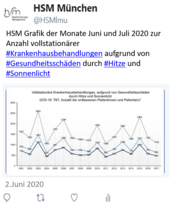Exploring the role of hospitals and office-based physicians in timely provision of statins following acute myocardial infarction: a secondary analysis of a nationwide cohort using cross-classified multilevel models
| Autoren/Herausgeber: |
Schang, L. Koller, D. Sundmacher, L. |
|---|---|
| Erschienen: | 2019 |
| Publikationsart: | Articles in Refereed Journals (International) |
| erschienen in: | BMJ Open |
| Weitere Quellenangabe: | Volume 9(10) |
| Zusatzinformation: | DOI: 10.1136/bmjopen-2019-030272 |
Abstract
Objectives To examine the role of hospitals and office-based physicians in empirical networks that deliver care to the same population with regard to the timely provision of appropriate care after hospital discharge.
Design Secondary data analysis of a nationwide cohort using cross-classified multilevel models.
Setting Transition from hospital to ambulatory care.
Participants All patients discharged for acute myocardial infarction (AMI) from Germany’s largest statutory health insurance fund group in 2011.
Main outcome measure Patients’ odds of receiving a statin prescription within 30 days after hospital discharge.
Results We found significant variation in 30-day statin prescribing between hospitals (median OR (MOR) 1.40; 95% credible interval (CrI) 1.36 to 1.45), hospital-physician pairs caring for the same patients (MOR 1.32; 95% CrI 1.26 to 1.38) and to a lesser extent between physicians (MOR 1.14; 95% CrI 1.11 to 1.19). About 67% of the variance between hospital-physician pairs and about 45% of the variance between hospitals was explained by hospital characteristics including a rural location, teaching status and the number of beds, the number of patients shared between a hospital and an office-based physician as well as 16 patient characteristics, including multimorbidity and dementia. We found no impact of physician characteristics.
Conclusions Timely prescription of appropriate secondary prevention pharmacotherapy after AMI is subject to considerable practice variation which is not consistent with clinical guidelines. Hospitals contribute more to the observed variation than physicians, and most of the variation lies at the patient level. To ensure care continuity for patients, it is important to strengthen hospital capacity for discharge management and coordination between hospitals and office-based physicians.





